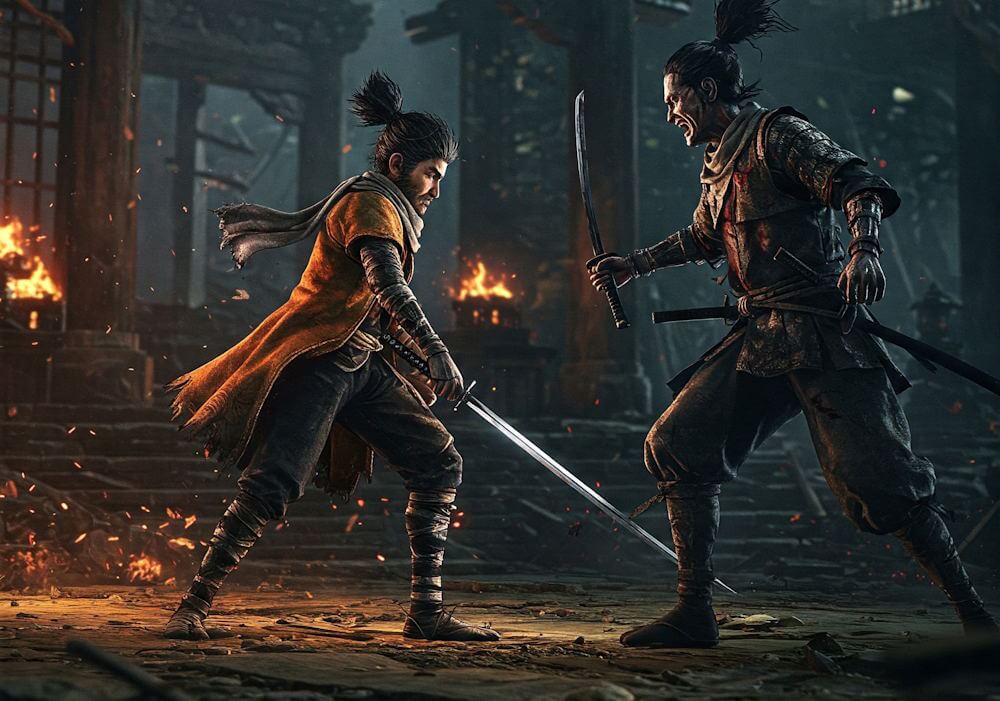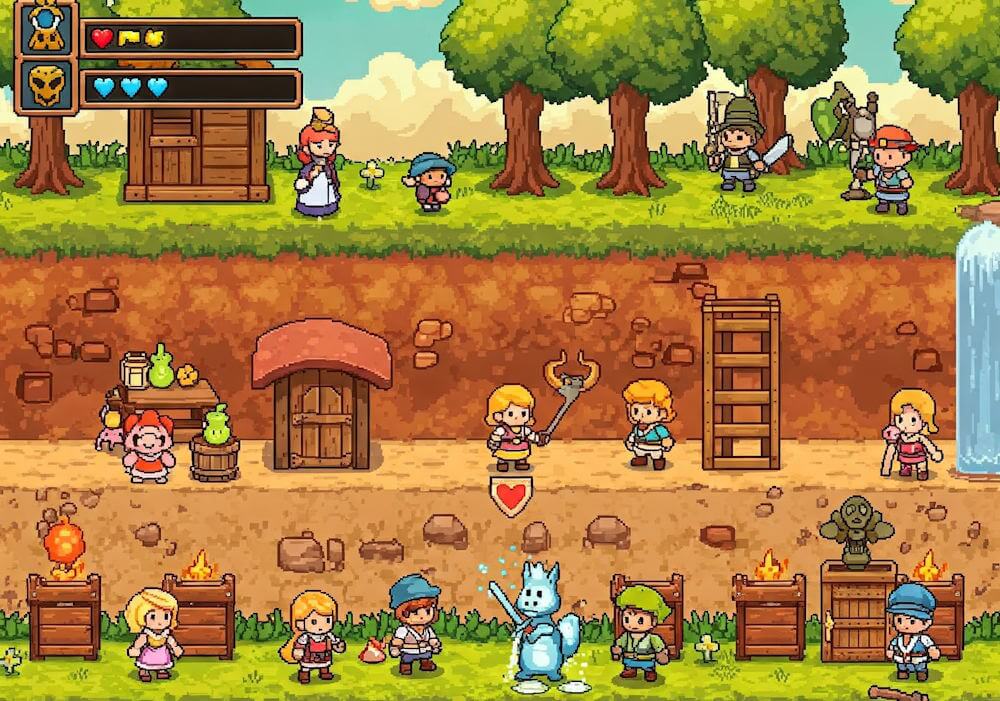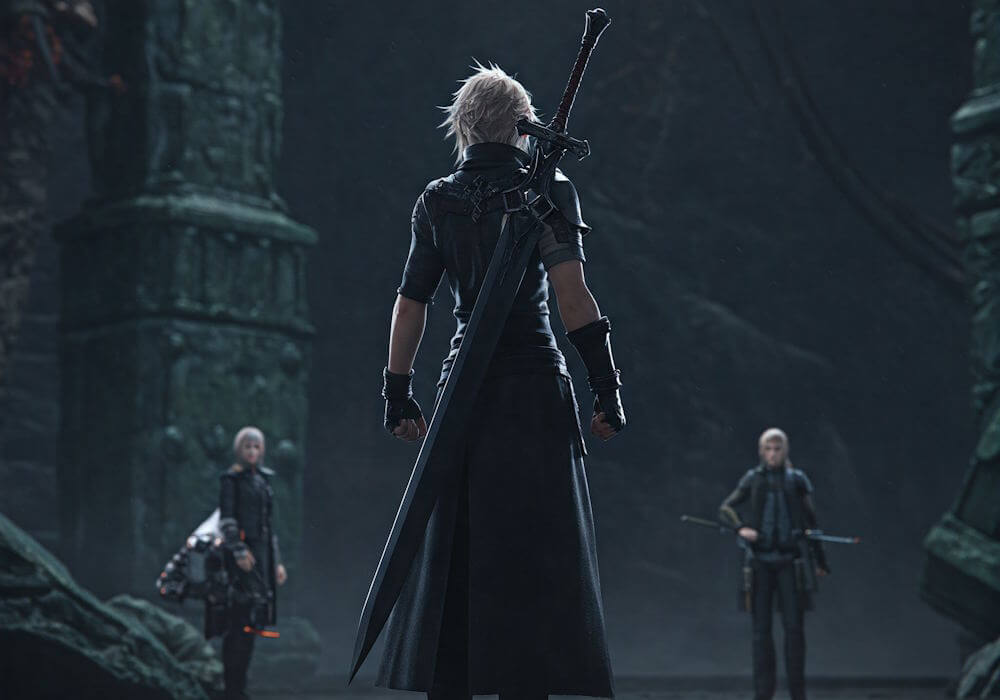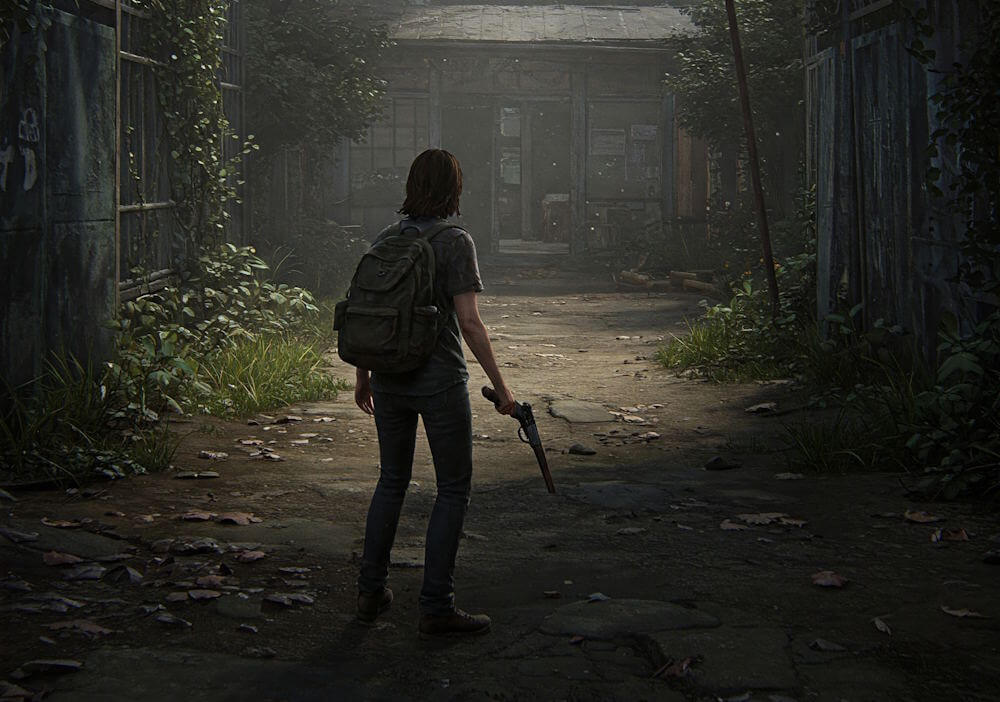Released on March 22, 2019, by the renowned developer FromSoftware, ‘Sekiro: Shadows Die Twice’ has quickly gained a reputation in the gaming community for its challenging gameplay. Set in a reimagined late 1500s Sengoku period in Japan, the game plunges players into the role of a shinobi named Wolf, on a quest to rescue his kidnapped lord and seek revenge on his enemies. This gripping narrative is complemented by intricate level design and engaging combat mechanics, setting it apart from FromSoftware’s previous titles.
One of the notable features of Sekiro is its emphasis on stealth mechanics, allowing players to approach challenges with varying strategies. Unlike traditional games in the genre, Sekiro encourages players to utilize stealth to navigate environments, take down foes silently, and manipulate the battlefield to their advantage. This refreshing focus means that players must carefully plan their movements, boosting the overall tension and excitement of gameplay.
The combat system also departs from the usual role-playing mechanics; rather than leveling up through experience points, players enhance their abilities primarily through skill and practice. The game introduces a unique posture system based on timing and precision, making each encounter feel intense and rewarding. While players can learn a variety of combat techniques, mastery over timing and enemy patterns is crucial, demanding players to adapt quickly to different fighting styles.
Upon its release, Sekiro received critical acclaim, with many praising its innovative gameplay and stunning visuals. Reviewers hailed its intricate design and the unique way it tackles the concept of difficulty in video games. Thus, Sekiro: Shadows Die Twice stands as a testament to FromSoftware’s expertise in crafting immersive and challenging experiences, inviting players to delve deep into its unforgiving world.
Understanding Game Difficulty
Game difficulty is a multifaceted concept that encompasses various elements contributing to a player’s overall experience. Primarily, game difficulty can be understood through its core dimensions: challenge, skill curve, and player frustration. Each of these factors plays a critical role in defining how a player interacts with the game and how satisfying or frustrating the experience can be.
The term “challenge” refers to the obstacles and hurdles that players must face in order to progress in a game. In many instances, games are designed to present a range of challenges that test a player’s skills and abilities. This can take the form of complex puzzles, formidable enemies, or intricate game mechanics. A well-balanced challenge keeps players engaged without overwhelming them, allowing for a rewarding experience as they overcome difficulties.
Another important aspect is the “skill curve,” which tracks the progression of a player’s abilities over time. An effective skill curve is gradual, providing players with opportunities to learn and adapt to the game’s mechanics. Games that have steep skill curves may lead to feelings of inadequacy or frustration, as players struggle to keep pace with the demands of the game. In contrast, a gradual skill curve fosters a sense of accomplishment as players hone their abilities and succeed in overcoming challenges.
Lastly, “player frustration” is an inevitable factor when discussing game difficulty. While some level of challenge can enhance player satisfaction, excessive difficulty can lead to frustration, causing players to disengage from the game entirely. Striking the right balance between challenge and player satisfaction is crucial for game developers, as it directly influences a game’s overall reception and longevity within the gaming community.
Comparing Sekiro to Other Notoriously Difficult Games
The realm of video games is replete with titles that challenge players to hone their skills and perseverance. Among these, ‘Dark Souls,’ ‘Bloodborne,’ and ‘Nioh’ are frequently mentioned when the topic of difficulty arises. Each of these titles has cultivated a reputation for punishing encounters and demanding gameplay, yet ‘Sekiro: Shadows Die Twice’ presents its own distinctive challenges and mechanisms that set it apart.
‘Dark Souls,’ with its intricate level design and methodical combat system, emphasizes the importance of patience and tactical decision-making. The game often punishes players for rushed actions, rewarding careful observation of enemy behavior and exploration of its labyrinthine environments. While it involves a learning curve that many players embrace, the gameplay remains grounded in the role-playing genre, allowing for character builds and customization that can facilitate different play styles.
Contrastingly, ‘Bloodborne’ accelerates the pace, favoring aggressive tactics and swift execution. It invites players to keep the pressure on opponents while introducing the concept of regaining health through retaliation. The environmental storytelling and Lovecraftian aesthetic contribute to a haunting atmosphere, challenging players not only with combat but with the continuous need to adapt to its faster rhythm.
‘Nioh’ expands on these ideas by fusing action-RPG elements with Japanese mythological themes. Combat is largely defined by a stance system that requires players to master different postures for both offense and defense. This mechanic introduces an additional layer of complexity, as timing and position are imperative to achieve victory in its various encounters.
In contrast, ‘Sekiro: Shadows Die Twice’ revolutionizes the approach to difficulty by eschewing character customization for a singular protagonist, which influences its narrative engagement. Combat is centered on precision and timing, emphasizing posture over health bars. This mechanic creates a unique rhythm between attacker and defender, pushing players to learn enemy patterns and develop reflexes that prioritize timing over brute force. Consequently, while ‘Sekiro’ shares a lineage with its hard-as-nails predecessors, its distinctive design and combat philosophy render it a unique experience in the realm of challenging video games.
Key Mechanics that Contribute to Difficulty
One of the defining aspects of Sekiro: Shadows Die Twice is its combat system, which sets it apart from other games in the action-adventure genre. The game eschews traditional health bars for a more nuanced posture system. This mechanic emphasizes the importance of offensive and defensive tactics, as players must look for openings in their opponent’s posture to deliver a decisive blow. Successfully breaking an enemy’s posture allows for deathblows, which can be pivotal in both duels and against formidable bosses. This mechanic not only adds layers to the combat but also creates a high level of intensity, forcing players to adapt quickly and think strategically.
Timing plays a critical role in mastering the gameplay of Sekiro. Players must learn to parry attacks precisely; a well-timed deflection can shift the tide of battle in their favor. Unlike many titles where simply dodging or blocking suffices, Sekiro rewards those who can read their enemies and respond with perfect timing. This emphasis on timing translates into a steep learning curve for newcomers, as mastering this aspect can take considerable practice and dedication.
Additionally, stealth mechanics play a significant part in the gameplay experience. The ability to approach enemies discreetly can offer a tactical advantage, allowing players to thin out adversaries before engaging in direct combat. This element encourages players to think about their surroundings and utilize the environment to their advantage. However, reliance on stealth also necessitates a combination of precision and patience, which can add to the overall challenge.
Moreover, Sekiro is renowned for its intricate boss battles, each requiring unique strategies and a deep understanding of the mechanics at play. These encounters often last several minutes and demand not only skill but also endurance from players. The cumulative effect of these elements contributes to the game’s reputation as an exceptionally challenging experience, inviting players to engage thoughtfully with its systems.
Player Experiences: Successes and Failures
Central to the debate surrounding the difficulty of Sekiro: Shadows Die Twice are the personal experiences of players who have bravely ventured into its challenging world. Many gamers recount moments of exasperation and sheer determination as they navigate the intricately designed levels, facing formidable foes that require not just skill, but mental fortitude. One player shared their journey after spending countless hours struggling against a particularly brutal boss. Just as they felt ready to give up, a breakthrough moment occurred: a shift in strategy led to a hard-won victory. This success ignited an ecstatic feeling of achievement, illustrating how perseverance transforms frustration into triumph.
Conversely, there are equally compelling narratives of players who found themselves overwhelmed by the game’s punishing difficulty. One such account describes a seasoned gamer, accustomed to the challenges posed by previous titles from FromSoftware, yet finding themselves utterly defeated in their first encounters with the game’s synthetic adversaries. This player highlighted a persistent sense of inadequacy, resulting in both emotional fatigue and the wish to abandon the game altogether. However, rather than surrendering, they chose to reassess their approach, diving into community forums and gameplay videos, seeking strategies and advice that ultimately reignited their passion.
The emotional rollercoaster of playing Sekiro often leads to profound reflections on individual skill levels and thresholds for frustration. For many, the journey becomes less about the mere act of playing and more about personal growth through challenge and adaptation. From exhilarating victories to heart-wrenching defeats, each experience uniquely shapes a player’s relationship with the game, underlining the subjective nature of difficulty in the gaming world. These player experiences not only highlight individual pathways to mastery but also bind gamers together in a shared saga of trials and accomplishments.
The Role of Practice and Skill Development
In the realm of challenging video games, particularly within the context of ‘Sekiro: Shadows Die Twice’, practice plays an indispensable role in player success. The game’s intricate mechanics demand a dedication to mastering various skills, and the concept of ‘git gud’ has become an integral part of the discussion surrounding player development. This phrase, often used humorously or in earnest within the gaming community, emphasizes the necessity for players to improve their abilities through persistent effort and intentional practice.
Reaching a competent level in Sekiro typically requires players to engage in repetitive trials against formidable foes, which may initially result in frequent defeats. This iterative process is vital, as it enables players to familiarize themselves with enemy attack patterns, sharpen their reflexes, and refine their combat strategies. Success in Sekiro is not solely reliant on inherent skill; rather, it hinges on a player’s willingness to engage in continuous practice, learn from failures, and adapt their approach over time.
The game encourages experimentation with various combat styles and tactics, prompting players to discover what works best for them. Engaging actively in training allows players to incorporate different skills and techniques, ultimately leading to a more profound understanding of the game mechanics. This investment in practice not only boosts a player’s confidence but also enhances their overall gaming experience, turning frustrating moments into opportunities for growth.
Thus, the culture surrounding Sekiro advocates for skill development as a pathway to overcoming the daunting challenges presented by the game. While it may initially seem insurmountable, with diligence and focus on practice, players can ultimately navigate the complexities of Sekiro, transforming their understanding and approach to difficult gaming situations. Embracing this process opens the gateway to mastery, showcasing the critical role that skill development plays in the journey through this challenging title.
Accessibility and Difficulty Options in Sekiro
“Sekiro: Shadows Die Twice” has garnered significant attention for its level of difficulty, with many players embracing the challenge it presents. Unlike many modern games that feature an array of difficulty settings, Sekiro opts for a singular, unyielding approach to its challenge. This design choice firmly positions players within a specifically crafted experience, demanding their utmost focus and skill to progress. While this dedication to difficulty can be invigorating for some, it can also alienate a portion of the gaming community that seeks inclusive options.
Critics often debate whether the absence of adjustable difficulty settings genuinely enhances the game’s experience or if it detracts from accessibility. Proponents argue that by removing difficulty levels, Sekiro immerses players in the narrative and gameplay design intended by the developers. This perspective suggests that the inherent challenge fosters a deeper sense of accomplishment upon overcoming obstacles, thereby enriching the overall experience. Boss battles and enemy encounters are meticulously designed to encourage players to refine their approaches, master timing, and learn from their failures.
Conversely, there are compelling arguments that games like Sekiro should consider catering to a broader audience. The gaming landscape has evolved, with players representing varying skill levels and preferences. For some, the barrier presented by Sekiro’s unapologetic difficulty may prevent them from engaging in what could otherwise be a rewarding journey. This raises important questions about the evolution of game design and whether inclusivity should take precedence over artistic intent.
In contemplating the balance between challenge and accessibility, it becomes clear that while Sekiro’s approach is intentional, the discussion around difficulty settings remains a relevant topic in the gaming community. Ultimately, the impact of these design choices continues to shape player experiences and discussions around what makes a game truly enjoyable.
The Impact of Difficulty on Game Design
The increasing emphasis on difficulty in video games has translated into a distinct influence on game design philosophies. In the case of “Sekiro: Shadows Die Twice,” this approach is highly evident. The game inherently revolutionizes players’ interactions with narrative structure and gameplay mechanics, resulting in a uniquely engaging experience. The deliberate difficulty woven into the core of the gameplay compels players to develop not only their reflexes but also their understanding of game systems. Such a challenge is not merely about increasing frustration but serves as a catalyst that requires players to adapt and enhance their skills, fostering a deeper engagement with the storyline.
Challenging gameplay can act as the backbone of a compelling narrative. In “Sekiro,” the intensity of the challenges encountered reinforces the stakes of the story. As players strive through formidable enemies and intricate boss battles, the sense of achievement upon overcoming obstacles leads to a richer appreciation of the narrative experience. This correlation between difficulty and storytelling paves the way for a more immersive world where players feel more invested in the outcomes of their actions.
This evolving dynamic in game design prompts reflective thoughts on future trends. The rise of games that prioritize difficulty encourages developers to rethink their approaches to player engagement. Rather than simply providing easier routes or assistance systems, game design may increasingly focus on crafting experiences where players willingly confront adversity. In essence, the hard-earned victories can result in not just satisfaction but a lasting emotional impact on players.
Reflecting on these aspects, the future of game design could see a balance between accessibility and challenging content. As noted in “Sekiro: Shadows Die Twice,” embracing difficulty does not alienate players but rather fosters a dedicated community willing to invest time and effort into mastering complex game mechanics. The intricate relationship between difficulty and player experience undoubtedly shapes the landscape of future video games.
Conclusion: Is Sekiro the Hardest Game Ever?
In evaluating whether Sekiro: Shadows Die Twice is indeed the hardest game ever, it becomes evident that the question transcends a definitive answer. Throughout this discussion, we have examined various aspects of the game that contribute to its formidable reputation. Sekiro’s combat system is intricately designed, emphasizing precise timing and strategic decision-making, which many players find exceptionally challenging. The game’s steep learning curve is reinforced by an unforgiving difficulty level, demanding not only skill and practice but also patience and resilience.
However, the perception of difficulty in video games is inherently subjective. For some players, the mechanics of Sekiro may feel overwhelming, while others might relish the heightened challenge it presents. Comparisons with other notoriously difficult games, such as Dark Souls or Nioh, reveal that what constitutes “hard” can vary significantly among players based on their individual experiences and gaming backgrounds. These differences highlight the importance of personal preference when discussing game difficulty.
Moreover, players may find that their enjoyment of games like Sekiro stems not solely from the challenges they face, but from the sense of accomplishment that accompanies overcoming those obstacles. The fulfillment derived from mastering a particular aspect of the game may ultimately influence one’s opinion on its difficulty. Thus, while Sekiro: Shadows Die Twice may stand out as a contender for the hardest game title, it is essential to recognize the diverse perspectives within the gaming community.
As we conclude, we invite readers to reflect on their own experiences with Sekiro and similar games. Is its challenge unparalleled, or are there other games that have tested your skills in just as formidable a manner? Sharing your thoughts could lead to a deeper understanding of what makes a game truly difficult, resonating with a broader audience of gamers navigating their own challenges.




